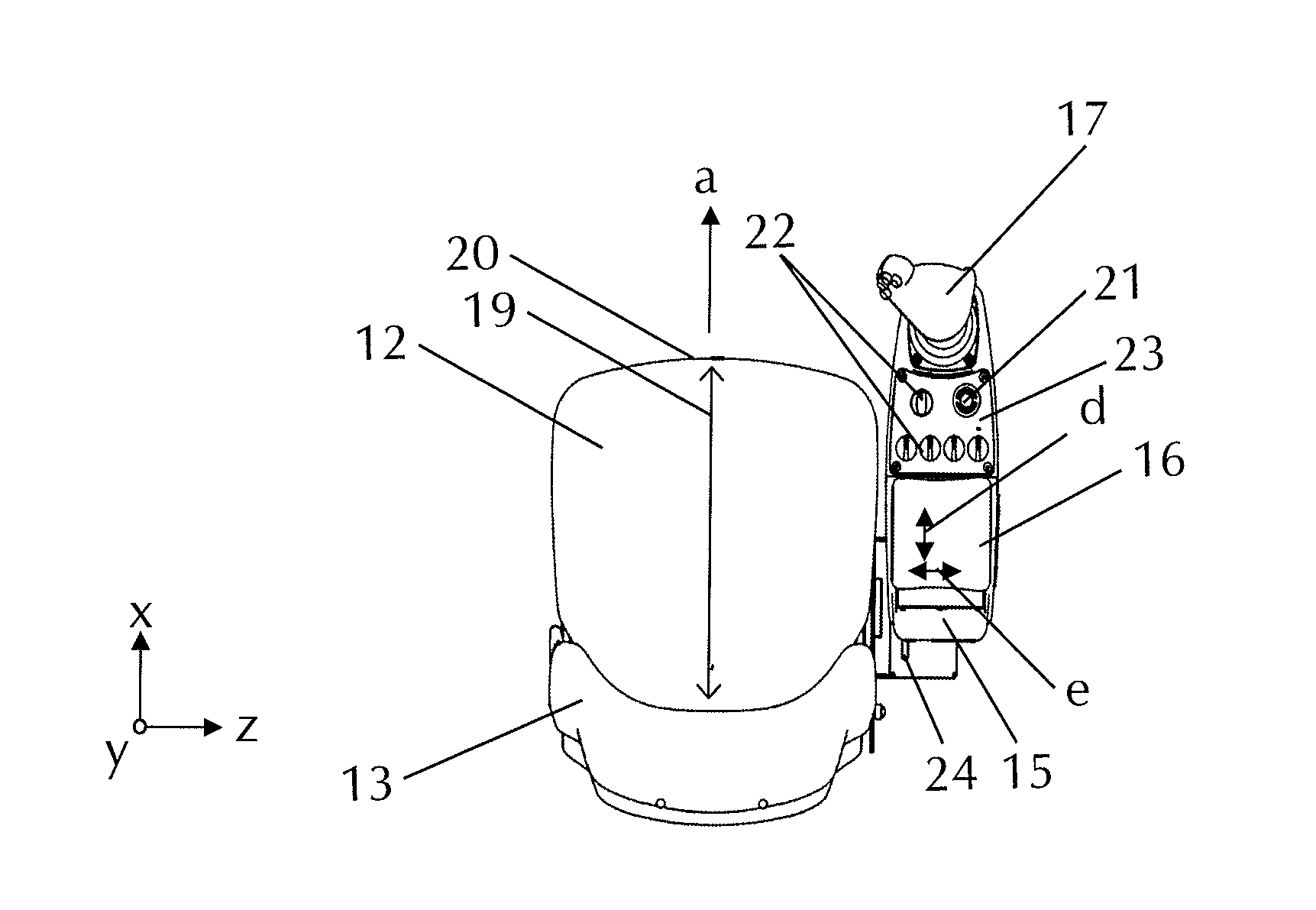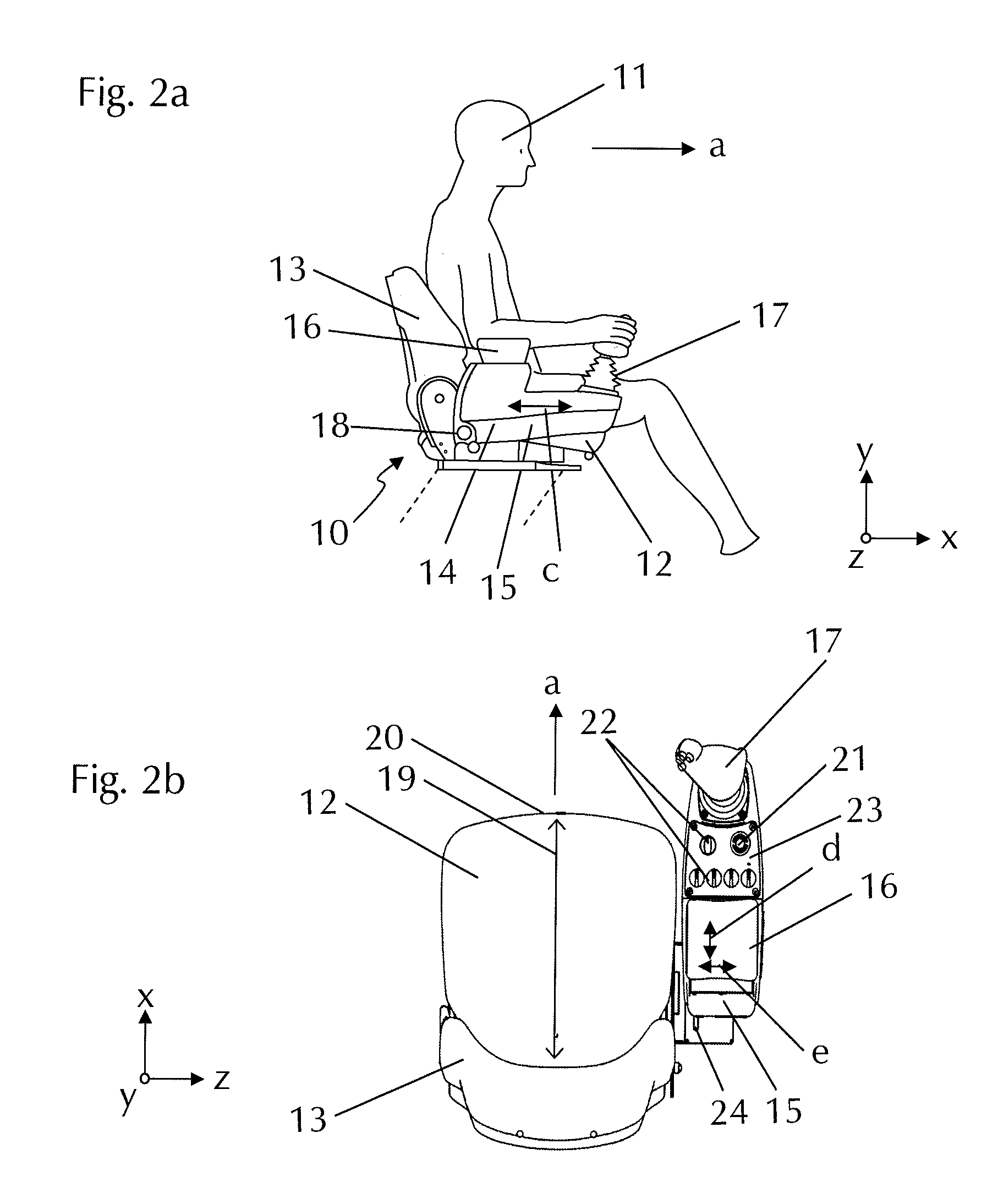Armrest And Operator Workplace Having Such An Armrest
a technology for operators and workplaces, applied in the field of operator seats, can solve problems such as pain in the corresponding skin areas, and achieve the effect of increasing the comfort and increasing the precision of machine control
- Summary
- Abstract
- Description
- Claims
- Application Information
AI Technical Summary
Benefits of technology
Problems solved by technology
Method used
Image
Examples
Embodiment Construction
[0037]The side view from FIG. 1 shows a typical construction machine 1, specifically a so-called tandem roller. The essential elements of the construction machine 1 are a machine frame 2, a front roller 3, and a rear roller 4. Furthermore, a drive device 7 is provided, which delivers the drive energy required to drive the construction machine 1. For ground processing, the construction machine 1 is moved in the arrow direction a (forward direction) over the ground 9 to be processed. An operator of the machine is seated in a machine operator seat according to the invention (not visible in FIG. 1) in the cab 6 and controls the machine functions therefrom.
[0038]This machine operator seat 10 is shown in FIG. 2a having an operator 11 seated therein, the machine operator seat 10 not being freely floating, of course, but rather being housed via appropriate connections, which are indicated by dashed lines in FIG. 2a, in the cab 6. The essential elements of the machine operator seat 10 are a ...
PUM
 Login to View More
Login to View More Abstract
Description
Claims
Application Information
 Login to View More
Login to View More - R&D
- Intellectual Property
- Life Sciences
- Materials
- Tech Scout
- Unparalleled Data Quality
- Higher Quality Content
- 60% Fewer Hallucinations
Browse by: Latest US Patents, China's latest patents, Technical Efficacy Thesaurus, Application Domain, Technology Topic, Popular Technical Reports.
© 2025 PatSnap. All rights reserved.Legal|Privacy policy|Modern Slavery Act Transparency Statement|Sitemap|About US| Contact US: help@patsnap.com



